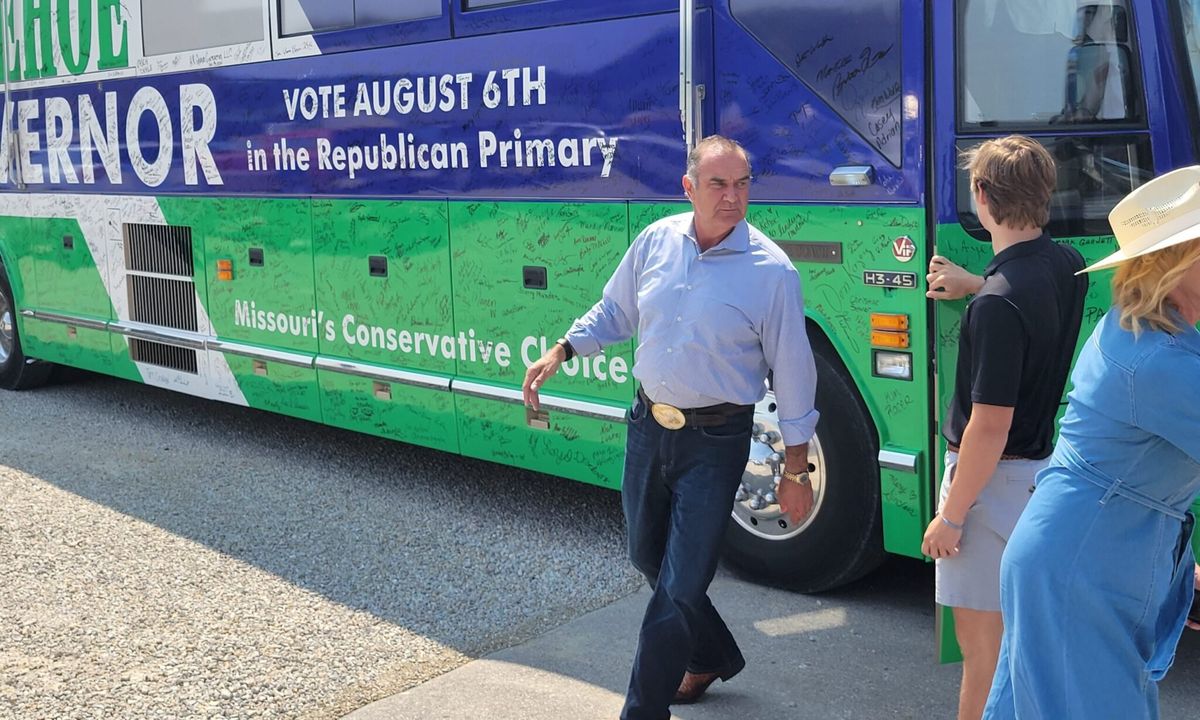Common Dreams
July 20, 2024

Photo by Umanoide on Unsplash
The ACLU on Friday issued a memo warning that a second term for former President Donald Trump would "exacerbate inequalities" in the criminal justice system and laying out plans to push against a potential Republican administration's efforts to do so.
The 14-page memo argues that Trump's agenda would be to expand incarceration, abusive policing practices, and the use of the death penalty, all of which the ACLU, a nonprofit human rights organization, opposes.
"We know from this country's history that these extreme and immoral policies harm communities and infringe upon our rights and humanity," Yasmin Cader, director of the ACLU's Trone Center for Justice and Equality, said in a statement that accompanied the release of the memo. "The ACLU is prepared to meet the Trump administration with the same fierce response as we did during his last term in office should he be reelected."
Most of the U.S. criminal legal system is run at the state or local level. More than 1.6 million people are incarcerated in state and local jails or prisons, compared to just over 200,000 in the federal system.
However, a second Trump administration would set the "tone" and create a "ripple effect across the country," threatening a "new era of mass incarceration," the ACLU said. The memo warns that Trump would do so in the following ways:Escalating punitive, draconian sentencing and incarceration approaches;
Incentivizing dramatically worse conditions for the nation's 1.9 million incarcerated people;
Reincarcerating nearly 3,000 people released to federal home confinement during the pandemic; and
July 20, 2024

Photo by Umanoide on Unsplash
The ACLU on Friday issued a memo warning that a second term for former President Donald Trump would "exacerbate inequalities" in the criminal justice system and laying out plans to push against a potential Republican administration's efforts to do so.
The 14-page memo argues that Trump's agenda would be to expand incarceration, abusive policing practices, and the use of the death penalty, all of which the ACLU, a nonprofit human rights organization, opposes.
"We know from this country's history that these extreme and immoral policies harm communities and infringe upon our rights and humanity," Yasmin Cader, director of the ACLU's Trone Center for Justice and Equality, said in a statement that accompanied the release of the memo. "The ACLU is prepared to meet the Trump administration with the same fierce response as we did during his last term in office should he be reelected."
Most of the U.S. criminal legal system is run at the state or local level. More than 1.6 million people are incarcerated in state and local jails or prisons, compared to just over 200,000 in the federal system.
However, a second Trump administration would set the "tone" and create a "ripple effect across the country," threatening a "new era of mass incarceration," the ACLU said. The memo warns that Trump would do so in the following ways:Escalating punitive, draconian sentencing and incarceration approaches;
Incentivizing dramatically worse conditions for the nation's 1.9 million incarcerated people;
Reincarcerating nearly 3,000 people released to federal home confinement during the pandemic; and
Undermining recent reforms, including the First Step Act.
The memo also argues that Trump encourages police abuses and has made an "open endorsement of authoritarian and violent policing." Trump's first attorney general, Jeff Sessions, had the Department of Justice "pull back" on investigations of police abuse, the memo notes.
The ACLU also drew attention to Trump's extreme position on the death penalty. More people were executed by the federal government during his four-year term than had been in any in over a century, and his administration went on what ProPublicacalled a "last-minute killing spree" before his term ended.
Trump's pro-death penalty position dates back decades. In 1989, he took out full-page advertisements in The New York Times and several other city newspapers calling for a reinstitution of the death penalty in New York state following the rape and assault of a jogger in Central Park. Five Black and Latino teenagers were wrongfully convicted of the crime.
"Bring back the death penalty and bring back our police!" the advertisement said in all caps.


.png)







